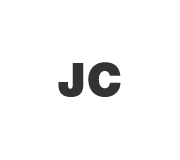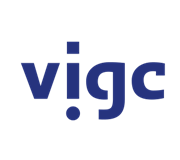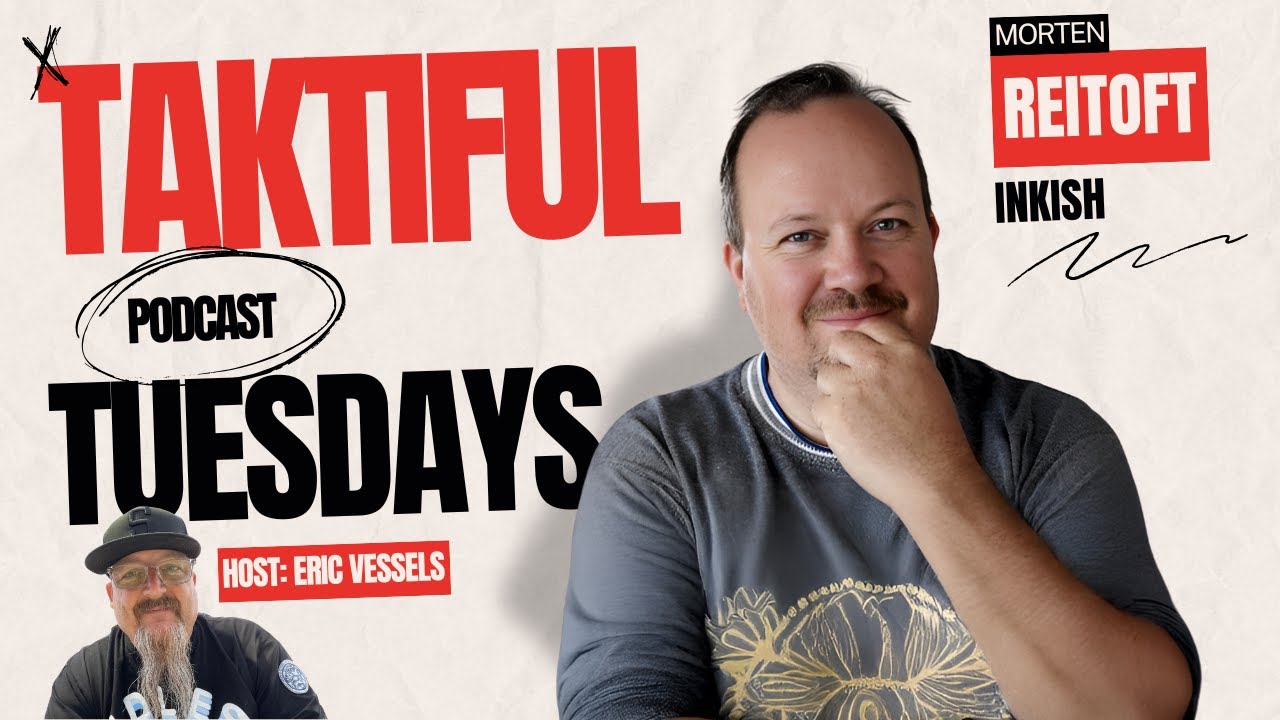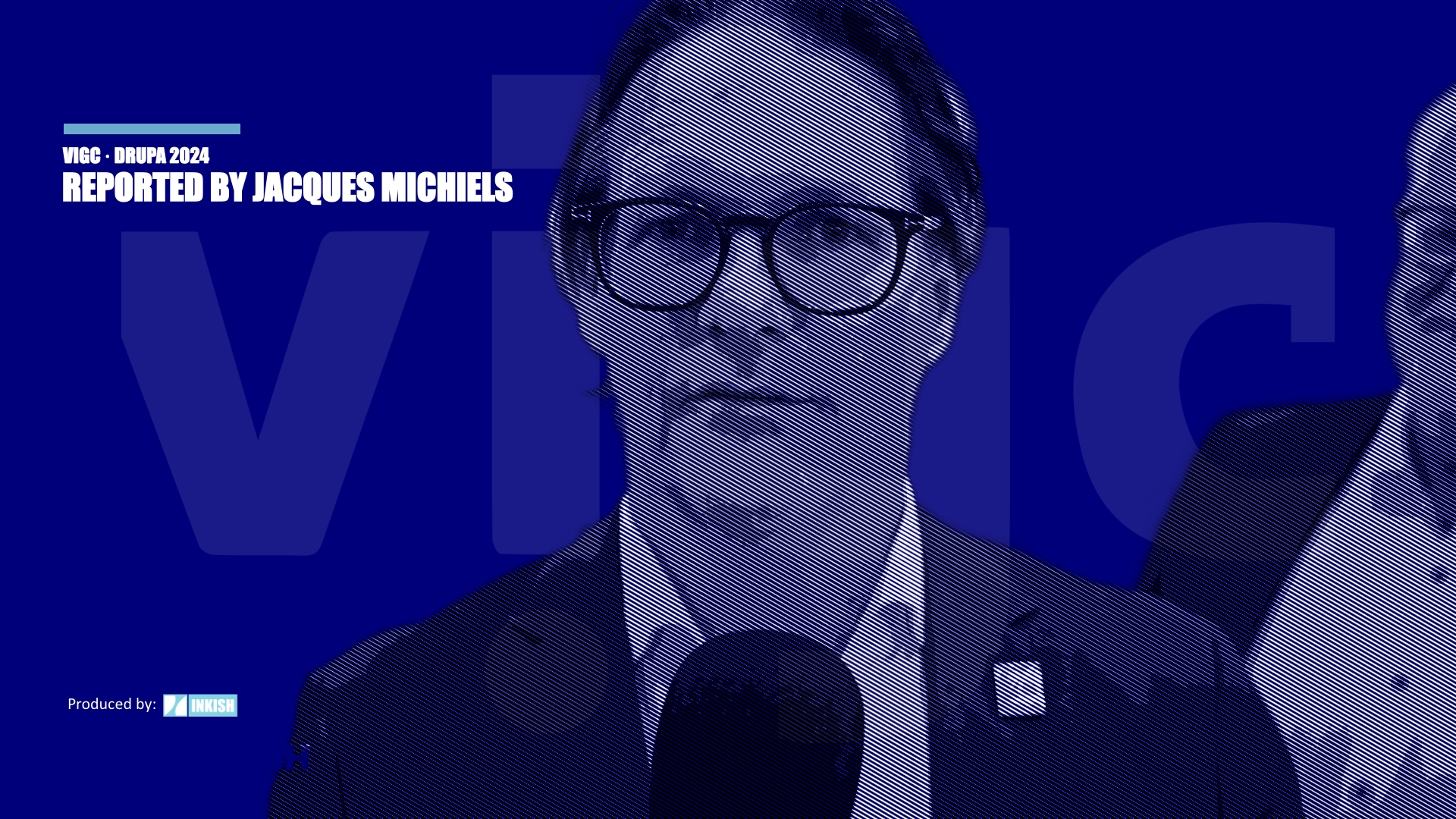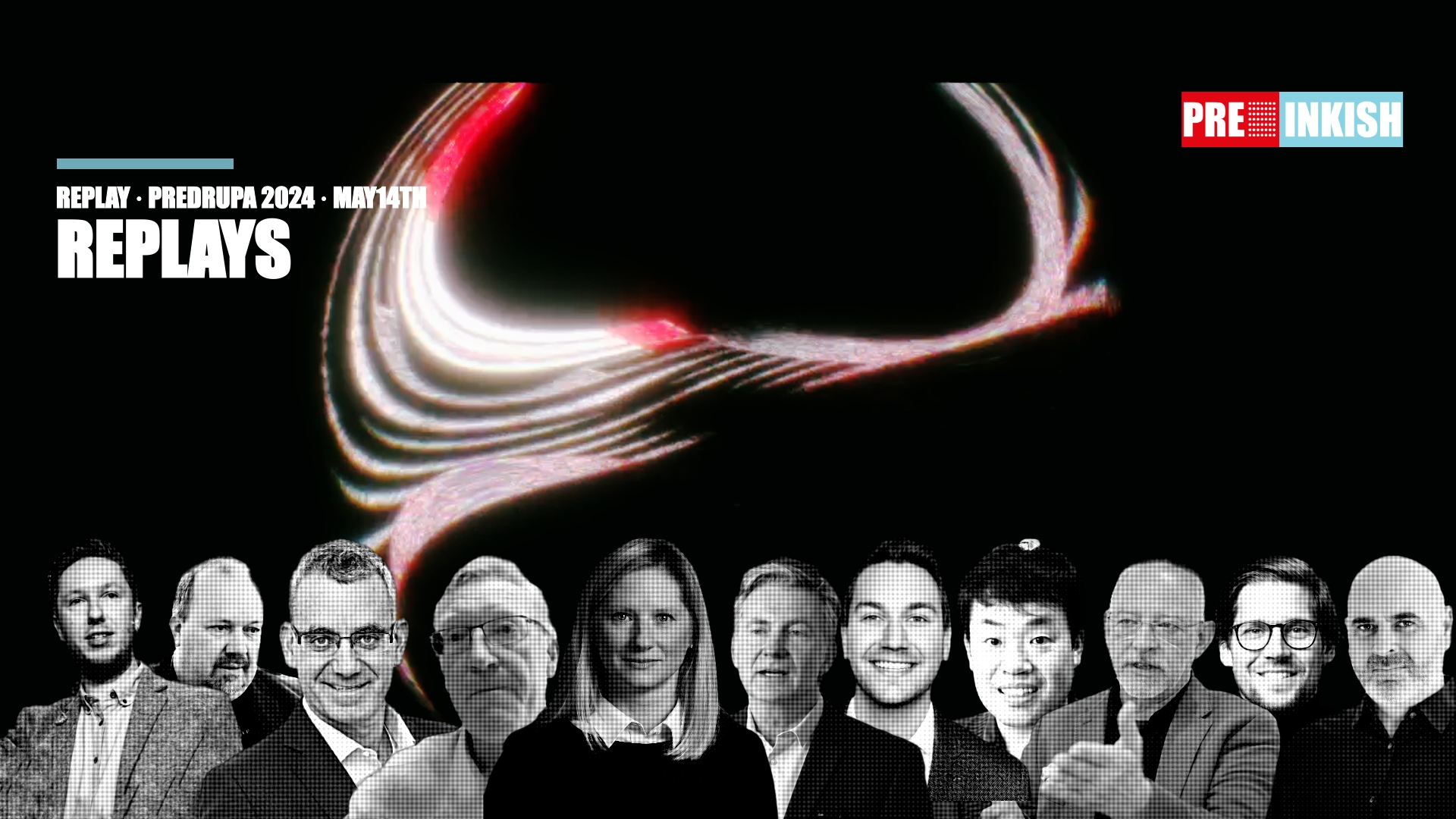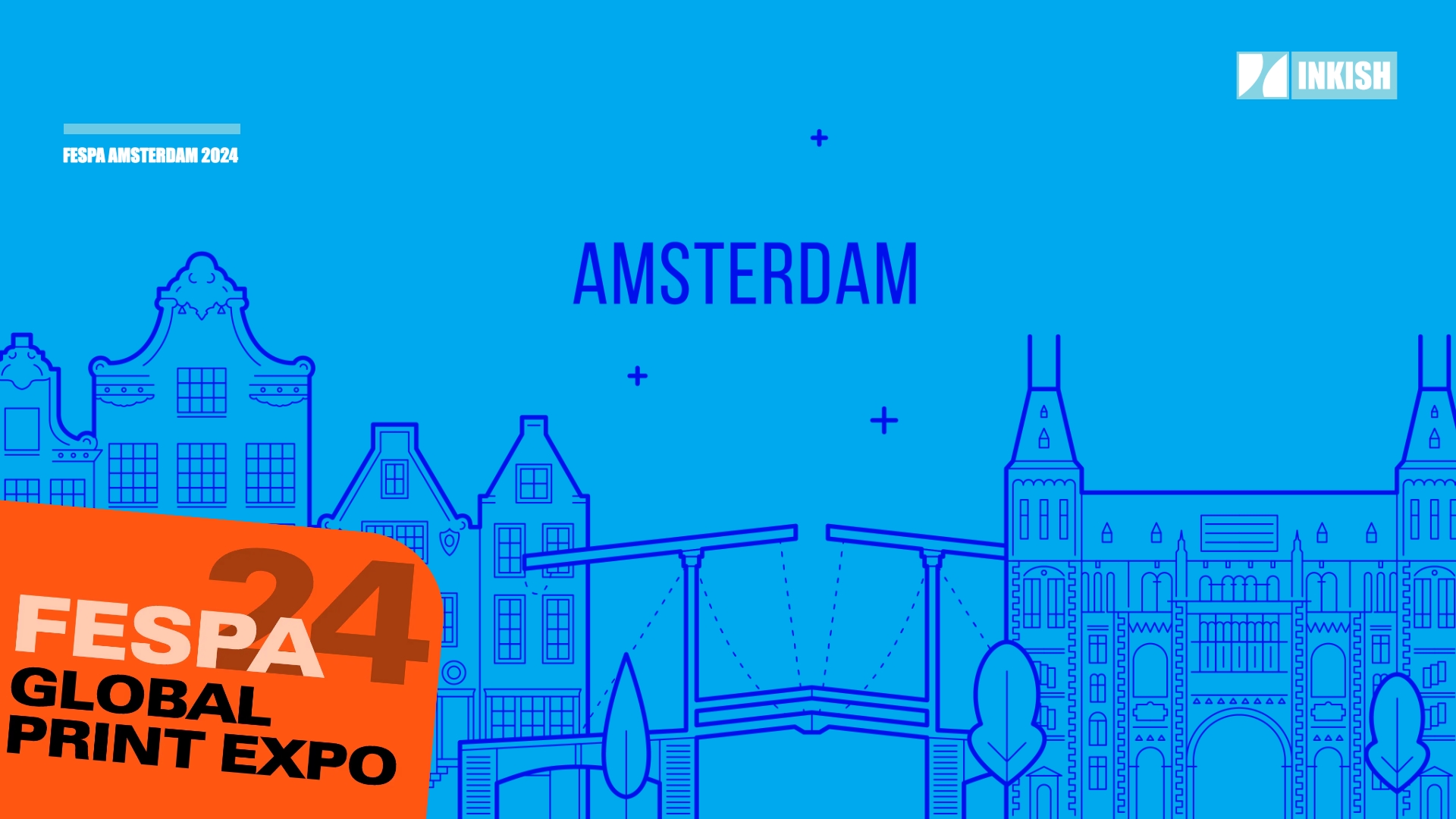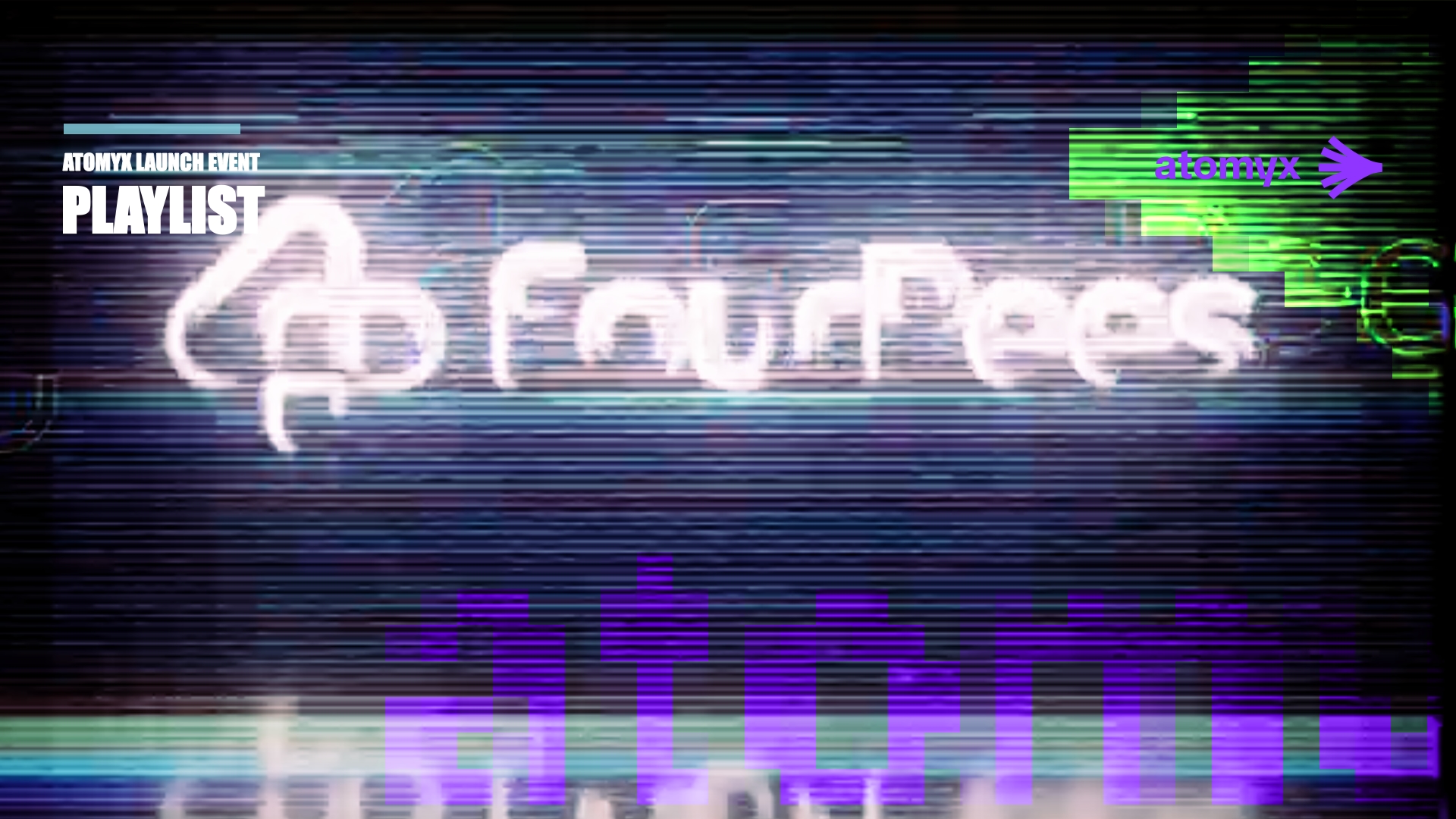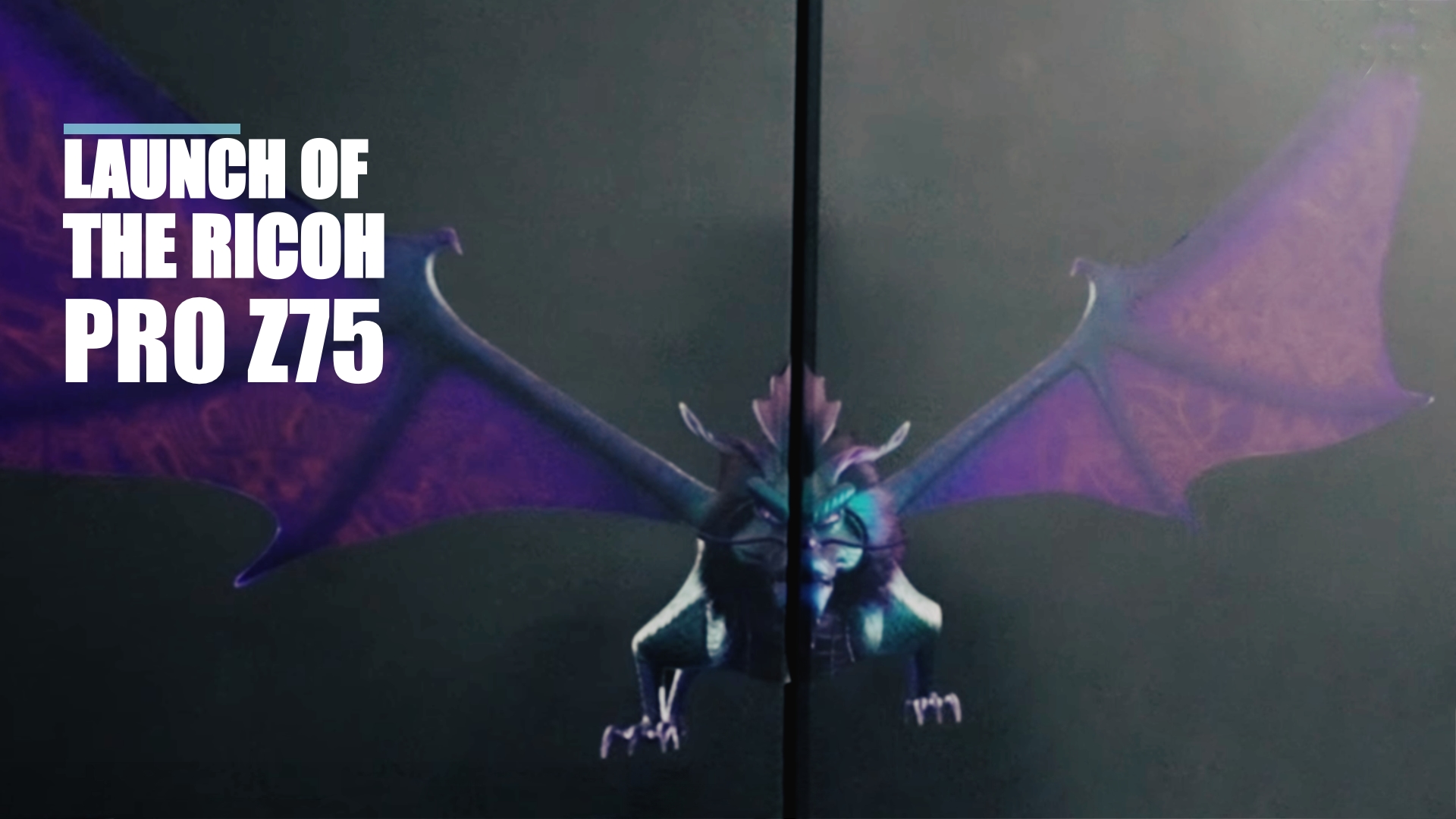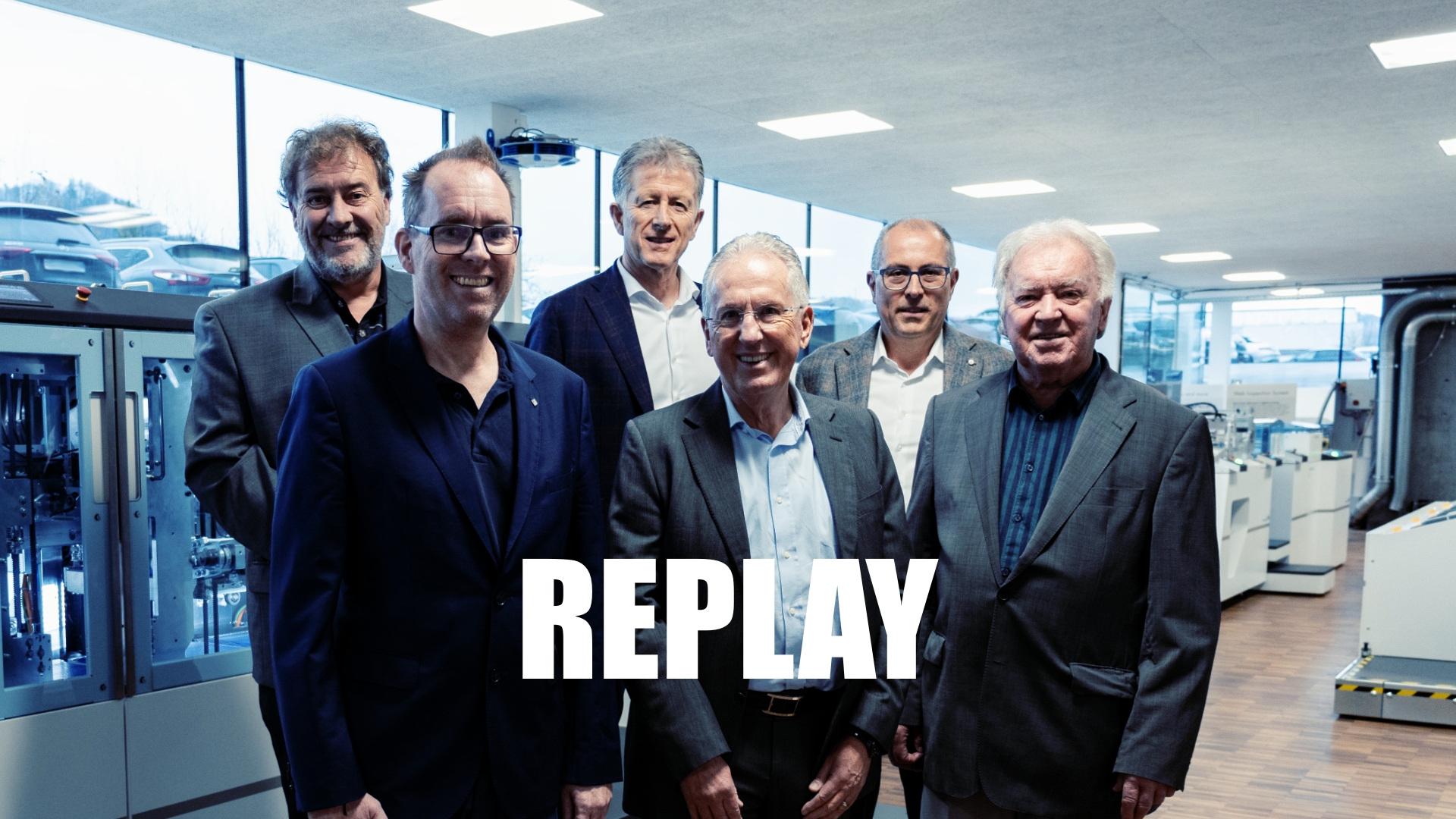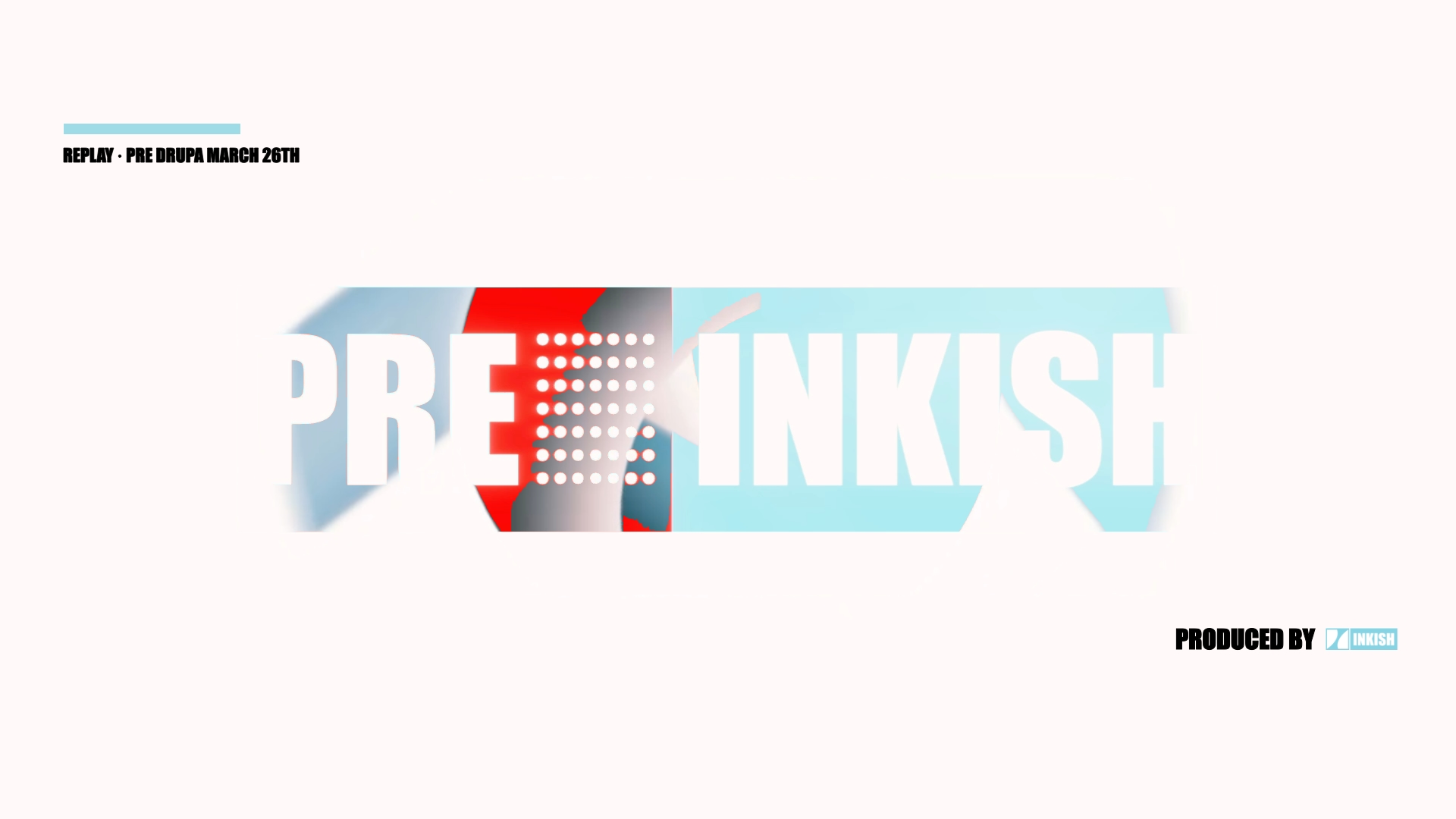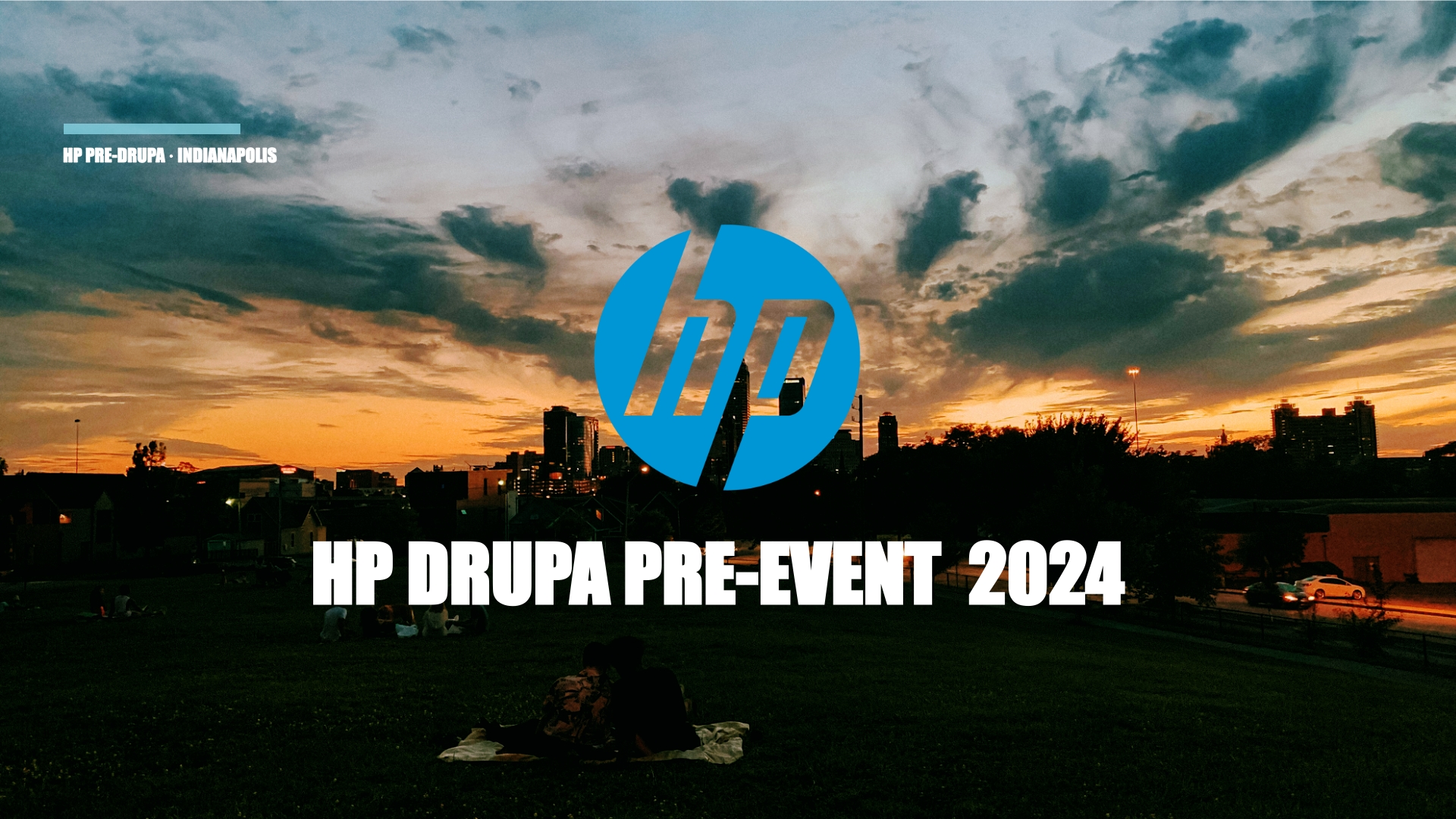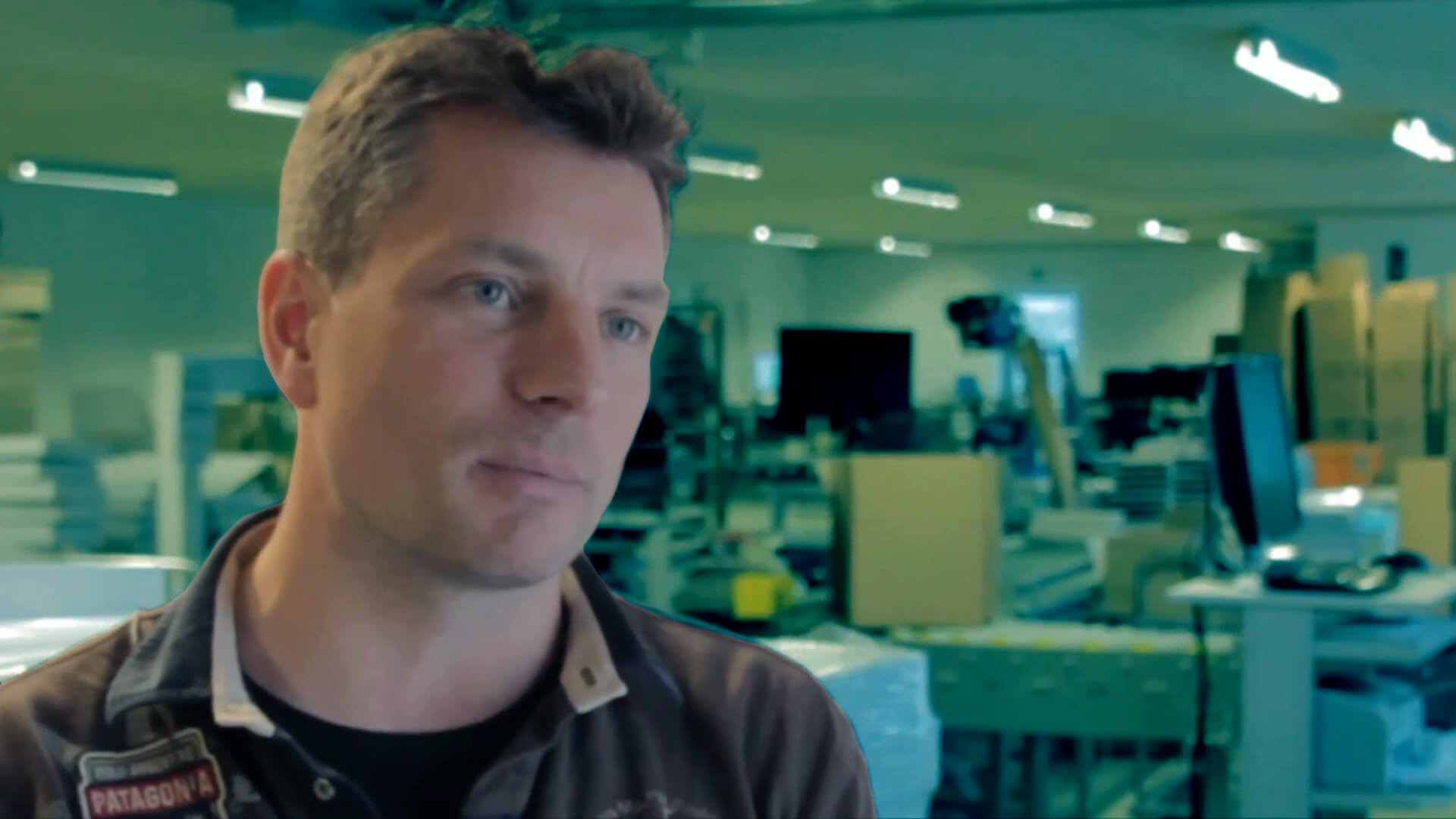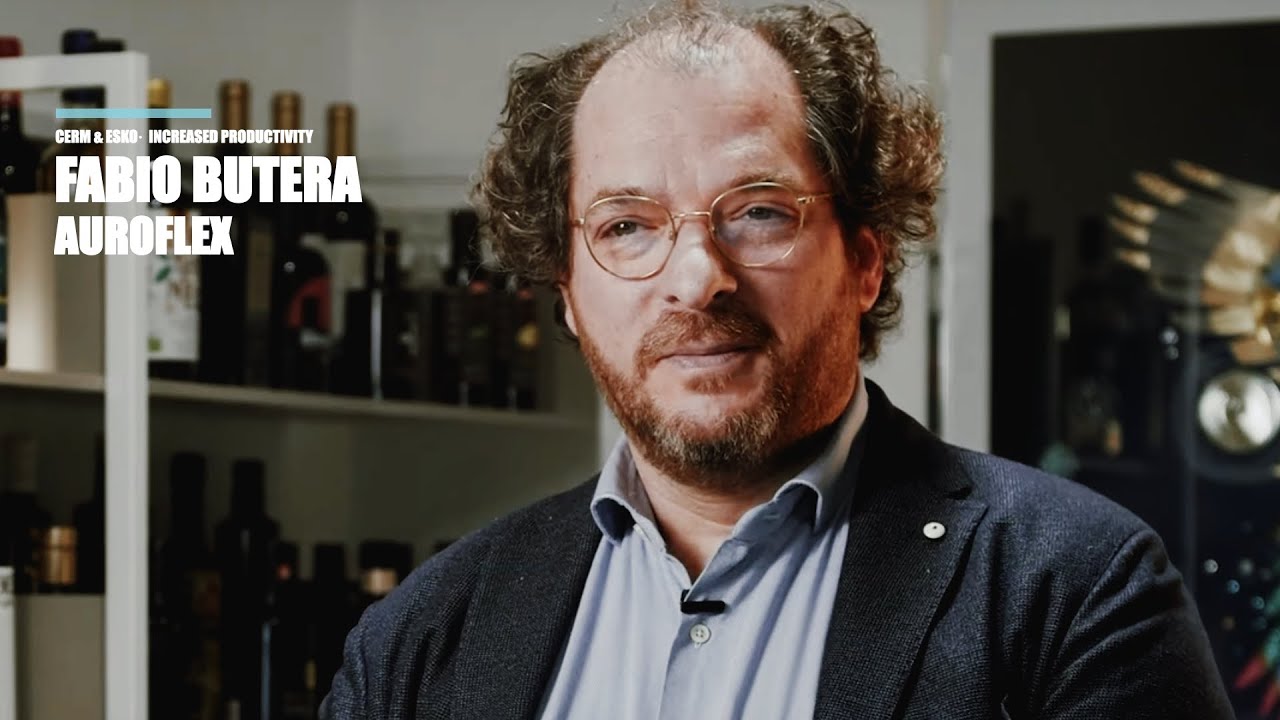INKISH.TV proudly presents: Goodbye 2015 – Hello 2016 Part Two
INKISH TV is celebrating our One Year Anniversary, since it’s almost a year ago since the first episode was produced. The editors Morten B. Reitoft and Nils Harbo is showing the highlights “Best of Inkish!”.
Welcome to this very special episode of Inkish – the second half. We are in front of the camera here, Morten and I, because we are doing a one-year celebration. We have the birthday – we’ve been producing this for almost a year now. So, I think we should take a look at some of the old programs.
You say birthday, it’s almost a year, so this is almost a birthday, right?
Yeah.
Fantastic.
So, I was thinking, one of the issues we’ve covered is online printing. I remember you asked a German printer whether he was an online printer or he was a printer online? Let’s have a look at some of the people who work with web-to-print:
“We are a hybrid solution of classical printers and online printers. We prefer today the expression to be an E-commerce Print Company. This is the modern expression to this, because it all started with web-to-print, but this is not our business, because web-to-print means you have 10 plates for different printing products and the customers, usually the small companies or home offices can go into their web browser and they can produce the products they want from web to the company. But today, it is all in online stores. It’s a lot more than only a web-to-print. E-commerce print means to have a whole model of making business with online solutions.”
“Many think that we only sell the products available on our website, but in reality we sell a lot of jobs that is not so through the website. About 70% of the jobs we do is ordered online; about 30% of what we do is ordered through our customer service. It’s hard to build good Web solutions, it’s difficult, it costs a lot of money. We will have not a basically website to print, but from any website to a printer. So, we’ll integrate more directly with our customers, so they don’t have to generate a PDF file – go to our website and order. We’ll have much more where the order is done basically on the company’s Internet and designed in there. Basically, we have built an API for using all of our products online, so when a company says: “We need this product quite regularly, can we do the design on our own website and just press the current button?”, and then push the data to us directly, and yes they can. And then it’s picked up from an FTP, with an XML file and the PDF and sent directly into production.”
So, web-to-print is not a new thing?
No.
But how is the future? What will happen in the next year in this area?
More web-to-print, for sure, because a lot of printers see this as direction similar to buying an airline ticket, flight ticket. I mean, also the customers are requiring to be able to service themselves for a majority of the products. The more print that goes online – the bigger the niche will be for specialized product and requirements for bigger service. One of the issues that people often say about web-to-print is that it equals to have cheap prices, but I think that what we will see is also what both Esben and Christian from Laserline and Lasertryk mentioned in the YouTube we’ve done with them is that the big percentage of clients ask offline for quotes and place orders. That is for the jobs that are not so easy to present online, or if a customer needs to have a technical support for creating it. Do you remember Laserline? They’ve had like 40 graphic people working in their business to do customer support. So, obviously there is a need for both and I think that a lot of printers will move into web-to-print and a lot of printers will have to do it, whether it’s a white-label solution, or it’s an own solution, or it’s something that is custom-developed, whatever way if you look at it, they need to move in that direction.
What is a white-label solution?
The white-label solution is very well known in many printing companies in Germany and Denmark, and in the U.S. and Asia. Basically, it’s a printer that sets up a store where customers who don’t print themselves can offer their product print to their customers in an own branded solution. So, that is what a white label solution is.
Yes. The next issue we should talk about I think, is the digital area versus offset printing.
Yeah. That is something that a lot of people – both, from the printers and from the industry has mentioned in the episodes that we have been talking to people about.
Let’s hear what they say about it:
“As we see it, basically, this battle between digital and offset has been more-less unchanged in the past 8-10 years. Today we still have a split between digital and offset, around 250 copiers.”
“I’m really sure that offset will not die in the next 10 or 20 years, but it will be reduced.”
“Seriously, I would love to say a 1,000 copiers, but the reality is that when you cannot read your offset press as efficiently, then you’ll get the lowest cost price from around 250 copiers. Basically, it’s a calculation between the price of the press, the price of the operators.”
“But in the same way we have to say: “Okay, how can we develop the digital print?” And there is a lot of opportunity – you have to see it, you have to think about it, and then you have to catch it.”
“But, basically in digital where you have one guy operating 6 presses and at offset we can’t have one guy operating 6 offset presses. With the offset you have the price of the place, you have the price of the setup paper, and in digital you don’t have that, but you’ll have a much higher price per page. So, today we have a split of around 250.”
This split of 250 – is that solid or will it change?
It’s for sure different from printing house to printing house, depending on how fast setup time they have on an offset machine, and how well they have organized the gang print and all these kinds of things, but I feel certain that the digital is moving ahead and also as Esben from Lasertryk says about what the industry is looking for, some of the next big things is inkjet printing. And if you look at inkjet, probably both – setup cost, and cost per piece of paper will be much lower. If you look at the HP T-series, printers are now even using it for newspaper printing. I think that actually Dirk from Heenemann is putting a very interesting point into perspective, because he says that it’s not only about the matter where the breakpoint is with the offset and digital, it’s also how you use digital. You see, Heenemann was using a lot of money investing in cross-media, and that means personalized print, that means a combination of digital and print online and offline media. I was participating at GrafKom event in Malmö in Sweden two months ago, where a lot of Swedish printers gave great examples on how cross-media can actually change the value of print a lot. So maybe Esben is right about this price point where it’s splits, but when the day is over, maybe it’s more about gaining even more value to the paper, so the customer will benefit even more from it.
Okay. So, you were at the GrafKom in Sweden?
Yeah.
Were there any women present there? Because this is our next issue. We’ve been around the world seeing printers. When I was a kid a printer was a man, but it has changed. So actually, we’ve been to Chicago and seen ‘Girls Who Print’, which is an American Association for women in print and they actually have a big role also as software developers. So’ let’s have a look at some of the women in print:
“Maybe I’ll take both home. But really, it’s such an honor and it’s nice to see so many more women coming into our industry and playing leadership roles. So, thank you everybody. I really appreciate it.”
‘Arifiq’ is a cloud-based software for self-service estimating that we offer to printers all over the world. I’m the CEO, a 100% right now, but I like being part of the weekly meetings our programmers have and listening and putting in the info from our customers’ day-to-day job. So, we don’t lose that thing into the programming.”
So, you’ve asked whether there were any women at the GrafKom?
Yes.
There were, not so many, but one of the episode from there was actually 5 young women from a University that were talking about the diversity in all kinds of businesses and how we see women and people from other countries and cultures, and how they interact with business locally. Maybe you also remember that from Graph Expo ‘The Girlie Award’, I think it was the Deborah Corn, who was hosting the yearly event, and she is not only into a women’s event, of course, but she is very much into the printing business and in my opinion is an important voice in America and maybe even worldwide in relation to that and she is a very active woman. I think it’s good that they had a focus on women, as well. I mean, as man, sometimes you can think that: “Why do women need to have that?”, but that’s I guess because we are not women and we don’t see that maybe men; I mean we don’t have any females in our organization, in Inkish. We have not made a specific episode about women in print at all, but maybe they have other opinions about how to run a business.
I think that you see a lot of women doing marketing. Is that right?
Yeah, that’s true. And also from the design part – most of the designers, probably around the world is women. So, I’m not saying that they don’t have a role, but precisely in our business, which we’ve also said is a traditional male-dominated business, it is maybe tough to become a printer.
The first company we covered in the first cavalcade, the first half of our special issue here was Gafs Kartong, which actually has a female CEO, the sister of Lasse Svärd.
And do you remember that day? The brother and sister that are operating now -they inherited it from their mother, who inherited it from their mother.
Yeah. But that’s Sweden, you know, the home of Pippi Långstrump.
So, you think that Pippi Långstrump is the right name in English?
I don’t know.
Long Stockings, basically, right.
I’m looking here for the next issue we should talk about – it’s about advices. When we go out and interview people, we ask them to give advices about the industry and what they are doing. So Morten, have you heard any good advices?
Oh yeah, I’ve heard a lot of good advices. Basically, we try to end all of our interviews by asking the people who we interview – do you have any good advices for our viewers? And some of them have been technical, some of them have been general business advices, and I think that for example, now when we’re talking about women in business, we’ve had an interview with Heidi Graff from RR Print and it just popped into my mind that she recommended to have a plan on where you want to go. It sounds like a stupid, obvious suggestion, because everybody should have, but I think that a lot of people don’t have a plan for where to move their business, so that might be one good advice.
Yes.
Another good advice I’ve heard was from Christian Luther from Laserline.
I have it here, I think we’re talking about the same thing.
You have it here? Yeah, great.
Let’s see what he says:
“There would be one advice, this is very old school of course, but maybe it’s a bit forgotten now in our times. And really, it sounds a bit crazy when I say so, but the customer has to be in the center of all of our efforts. In many talks I have in the industry, I usually found that the money is in the center of all thoughts and of all efforts. Of course, we have to earn money, that’s right, but it’s not the only thing in life.”
“The most important thing to look at, when talking about 3D is to look at the right technology for your application, because as we said there’s no such thing as a bad technology, but some are better at specific applications, so identify where your industry stands and what your clientele will be, and then look at the limitations of that technology. If you have those two factors, it would be very hard to fail.”
“I can’t really advise people on what to do with their unique business. In general, I would say if you are a small printer, small printing company with the small offset press, I think people should try to grab a niche, become very good at one specific thing and not try just to sell everything. If you are small, then become the best at one thing and then move from there onto another thing.”
Well, good advices from big printers in Scandinavia.
Yeah, and I think that it captures the essence of Inkish. Honestly, we believe that if business owners and industry can share ideas with each other, we can only get wiser and get better business and get more satisfied customers. So, this is what Inkish is about – we want to share information and give advices for both, technology and business, basically.
I think there has been revolution, because some years ago, the printing business seemed to be kind of, closed – “Oh, they shouldn’t know my secrets of the trade!”, but we haven’t encountered people who don’t want to share.
No.
They all want to share information. Thank you! We are happy about that.
But you know Nils, I actually think that one of the reasons why people are less worried about sharing information today is that of course customers and customer’s privacy is extremely important, which we also have experienced by some of the printers that we can’t film any customers’ products without getting approval from the clients of course, but I also think that maybe in the old times, the technology the printing house had was the key competitive thing.
Yeah.
Today I think it’s more general thing, because to own a printing machine itself is maybe not so competitive advantage, or maybe some customers even think it’s an advantage not to have a printing machine and just be a print broker. We’ve also been talking to some of them.
Yes. Well, we’ve been to some fairs. I think it’s very interesting to go to the fairs. That’s where you meet all the important people, the important products and then you can see some trends. So, we were in Chicago at the Graph Expo, and we’ve been at the Gulf Print&Pack in Dubai – what did impress you mostly at the fairs we’ve been to?
That’s a tough question, because when we went live with Inkish, that was actually during the Print&Pack in Dubai. You remember that? And I think, maybe Nils also recalls, that the first day I was there, together with Nils, we saw that it’s not a big exhibition, it’s not really an international show and it was not that interesting, but we’ve got some very good interviews – we’ve got a view on the new Xerox 1000 Docucolor machine, with the silver and the gold ink. From a technological perspective it was great to see that equipment, as well. We’ve also met some people from D2M, which is a 3D company that gave us the opportunity to go and see, for me it was the first 3D printing house ever.
Yeah, but I was wondering, I will actually ask you – when we are going to have a two-year anniversary, what do you think will happen? What will be the trend for the next year?
Definitely one of the things that a lot of people in the industry are talking about is H-UV, LED-UV, and we have been talking to people from the industry that said that the upcoming Drupa in Germany, will be in the name of HUV, LED-UV and that is of course, very interesting. We also see that finishing in small print runs is something that is trending. We see that in inkjet, we see ‘Waterfall’ technology like Memjet; it’s not just Memjet anymore, a lot of huge printing companies like HP and Xerox are using ‘Waterfall’ technology for inkjet. I think that a lot of people at the upcoming Drupa are also looking very much forward to see the NanoInk machines. At the upcoming Drupa, we will also see this Benny Landa technology – NanoInk, which I think a lot of people have been waiting for. In general, digital of course is growing a lot, and I think that there will be a lot of trends in that direction that will be interesting to follow in the year to come.
Don’t forget to watch in the future, as well.
Now when you are saying in the future, I want to congratulate – now as we speak, we’ve had 13,000 views on Inkish today.
Congratulations!
Thank you!
The future will happen anyway, whatever we do, it will happen. But behind the Inkish company, we have the third person, Magnus. I think we should bring Magnus here, because he has some clips that he wants to see. Magnus?
Yeah.
Hi Magnus.
Hello, Nils.
So, you’ve been around the world with Inkish, as well. We were in Riga.
Yeah, that’s about it, I guess.
Yeah, but I was thinking is there some special episode or some clip you’d like to show to our viewers?
I would like to see the one from Print&Pack in Dubai for two reasons. First, it’s national clip we’ve brought, it was the clip we did well, we were still programming the website and the website went live just when you were there.
I think it was in maybe May?
While you were in Dubai, at the trade show. I was supposed to go, but you had the ticket from me. That means we’ve got the good footage.
It’s an expensive country to go to, I can tell you.
So, I should be happy for staying home?
Yeah.
Yeah. I’m happy.
That’s nice, but we were talking about 3D.
3D printing was one of the big things that was displayed in Dubai and we even went to this company who specialized in 3D printing.
Yes.
And you can always argue if it’s a printing technology, or if it’s actually more engineering or molding, but it’s called 3D printing for some reason.
Do you think that the printers we have these days will get into the 3D printing, or do you see new companies starting up in this business and it will be like two separate ways?
That’s a tough one. The usage of 3D is so vast; it can be used for so many different things, especially in engineering, prototyping, product development and I don’t see a printing house bringing any value to that chain of business. But still, it’s called 3D printing, so who knows? And I think we saw something of the Euclid – it’s a kind of 3D technology that you use when they put the crease lines on this.
Yeah. Actually we showed this, which is made at the Highcon Euclid.
Yeah, this is a laser dye cut, but there are some crease lines going into it as well, and that is actually made while they are setting out the machine, so it’s a kind of 3D print that they do on some foil, or metal sheet that is getting 3D print. And you know there is a lot of talk about 3D printing going into medical surgeries, to print biological, or space industry as well, printing space plans.
And of course, military. The Dubai company had a lot of customers from military service. It was a secret; we couldn’t hear about it.
So, the only thing was the small replica?
Well, they’ve had a lot of production, I think they’ll get bigger. It’s an expanding area, as we know.
It should be. I mean, if you go to product development and you have prototyping of various things and making a prototype without 3D printing, it’s quite expensive and takes a long time, and you better be right the first time, otherwise it’s totally…
Yeah.
Let’s see some clips from Dubai.
Sure, let’s do that:
“With 3D Printing, you can just go directly from your 3D design to production, for more and more people are starting to understand its capabilities; forgetting the old days of just producing a prototype and now going directly into production. Now, you just start producing from day one.
So, the market is called DDM (Direct Digital Manufacturing); it’s a growing market, more and more people are starting to understand its capabilities, forgetting the old days of just producing a prototype and now going directly into production with these systems. The printers we work with; a lot of our ND goes into the materials, developing specific materials for specific tasks, so we have examples of materials which are very compatible, we have examples of materials which are aerospace certified, so they can go directly on aircraft and yeah, every couple of years you get 2 or 3 new materials aim that specific applications.”
Well that was the end of this episode of Inkish, a special episode where we were in front of the camera, but it’s a one-year anniversary and stay tuned for some upcoming and maybe we’ll see you in the two-year anniversary. But when is the anniversary and a birthday, you have to have gifts. Morten, could you come in here? Because actually, I’ve brought you some gifts. And like in our episodes, life is bitter and life is sweet. So, this is for you guys – thank you for doing the programs with Inkish and happy anniversary!
Thank you, Nils.
Same to you!
Happy anniversary to you, as well!
Thank you very much! See you guys.
So, now we have to break the contract with you…
We don’t.
“I think – yes. Business is not so hard, if you have good colleagues and partners and friends.”
